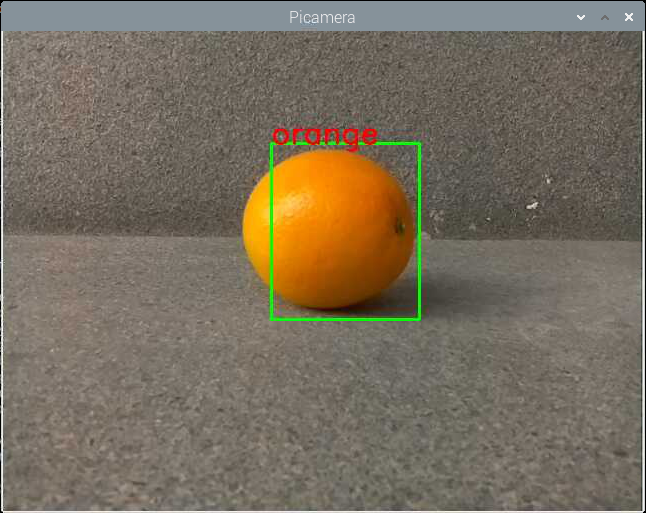Color Detection¶
Say a color and mark it in the field of view. This is not difficult for most humans, because we have been trained in this way since we were young.
For computers, thanks to deep learning, such tasks can also be accomplished. In this project, there is an algorithm that can find a certain color (6 kinds in total), such as finding “orange”.

Run the Code
cd /home/pi/vilib/examples
sudo python3 color_detection.py
View the Image
After the code runs, the terminal will display the following prompt:
No desktop !
* Serving Flask app "vilib.vilib" (lazy loading)
* Environment: production
WARNING: Do not use the development server in a production environment.
Use a production WSGI server instead.
* Debug mode: off
* Running on http://0.0.0.0:9000/ (Press CTRL+C to quit)
Then you can enter http://<your IP>:9000/mjpg in the browser to view the video screen. such as: https://192.168.18.113:9000/mjpg

Code
#!/usr/bin/env python3
from vilib import Vilib
from time import sleep
def main():
Vilib.camera_start(vflip=False,hflip=False) #
Vilib.display(local=True,web=True)
Vilib.color_detect(color="red") # red, green, blue, yellow , orange, purple
sleep(1)
# Vilib.detect_obj_parameter['color_x'] # Maximum color block center coordinate x
# Vilib.detect_obj_parameter['color_y'] # Maximum color block center coordinate x
# Vilib.detect_obj_parameter['color_w'] # Maximum color block pixel width
# Vilib.detect_obj_parameter['color_h'] # Maximum color block pixel height
# Vilib.detect_obj_parameter['color_n'] # Number of color blocks found
while True:
n = Vilib.detect_obj_parameter['color_n']
print("%s color blocks are found"%n, end=',', flush=True)
if n != 0:
w = Vilib.detect_obj_parameter['color_w']
h = Vilib.detect_obj_parameter['color_h']
print("the maximum color block pixel size is %s*%s"%(w,h))
else:
print('') # new line
sleep(0.5)
if __name__ == "__main__":
main()
How it works?
The first thing you need to pay attention to here is the following function. These two functions allow you to start the camera.
Vilib.camera_start(vflip=True,hflip=True)
Vilib.display(local=True,web=True)
Functions related to “color detection”:
Vilib.color_detect(color): For color detection, only one color detection can be performed at the same time. The parameters that can be input are:"red","orange","yellow","green","blue","purple"Vilib.color_detect_switch(False): Switch OFF color detection
The information detected by the target will be stored in the detect_obj_parameter = Manager().dict() dictionary.
In the main program, you can use it like this:
Vilib.detect_obj_parameter['color_x']
The keys of the dictionary and their uses are shown in the following list:
color_x: the x value of the center coordinate of the detected color block, the range is 0~320.color_y: the y value of the center coordinate of the detected color block, the range is 0~240.color_w: the width of the detected color block, the range is 0~320.color_h: the height of the detected color block, the range is 0~240.color_n: the number of detected color patches.